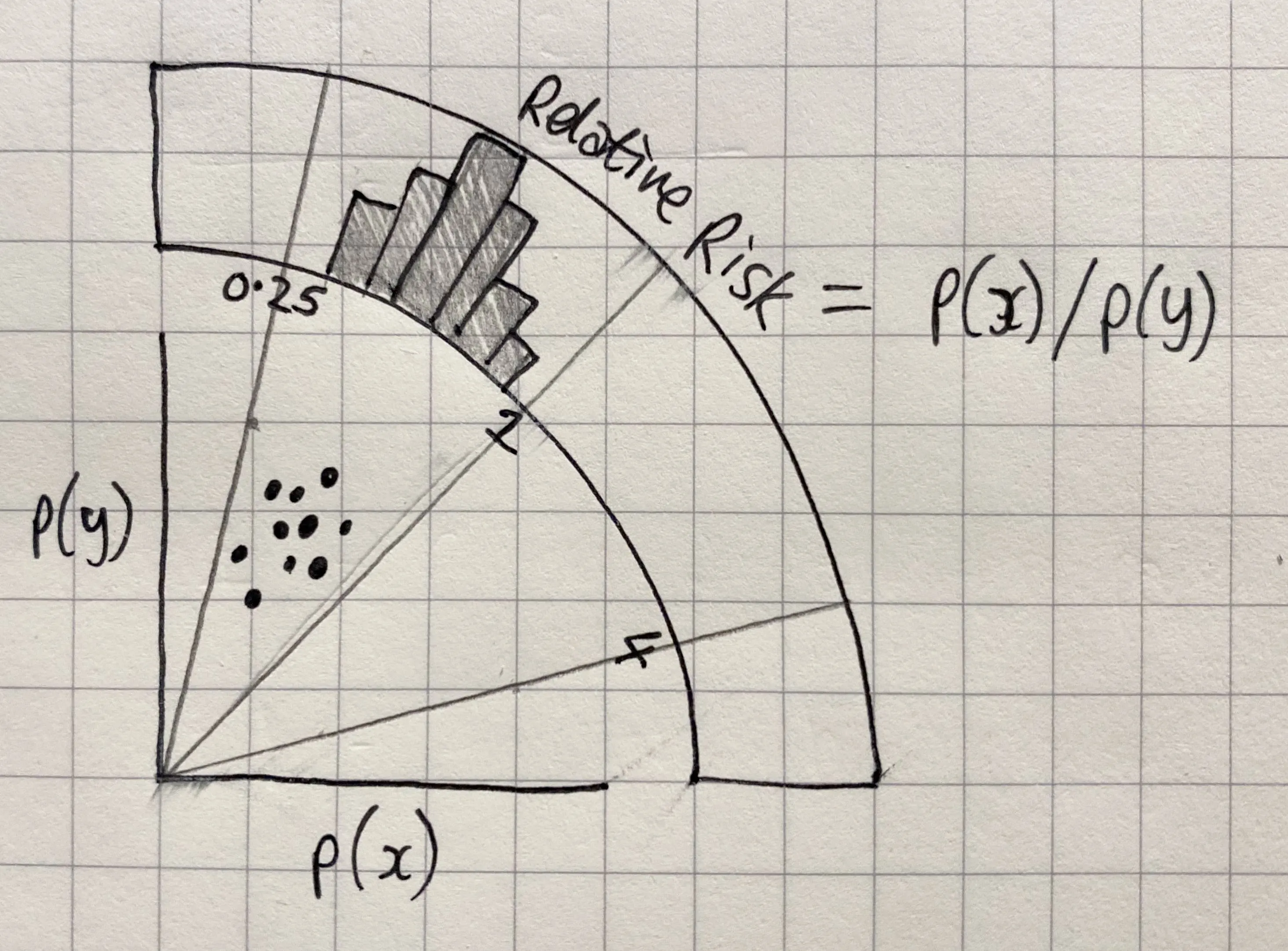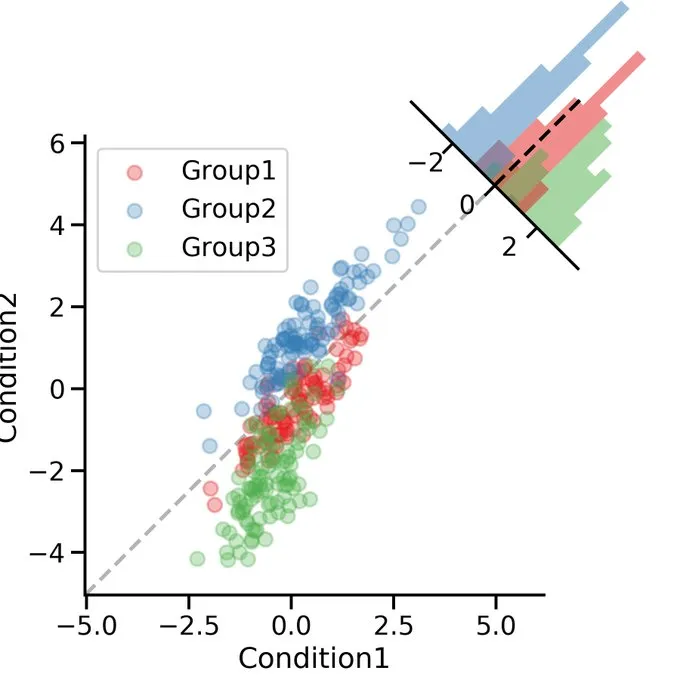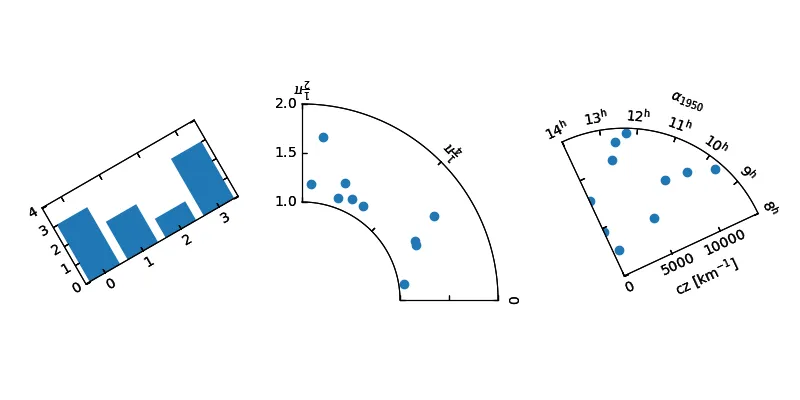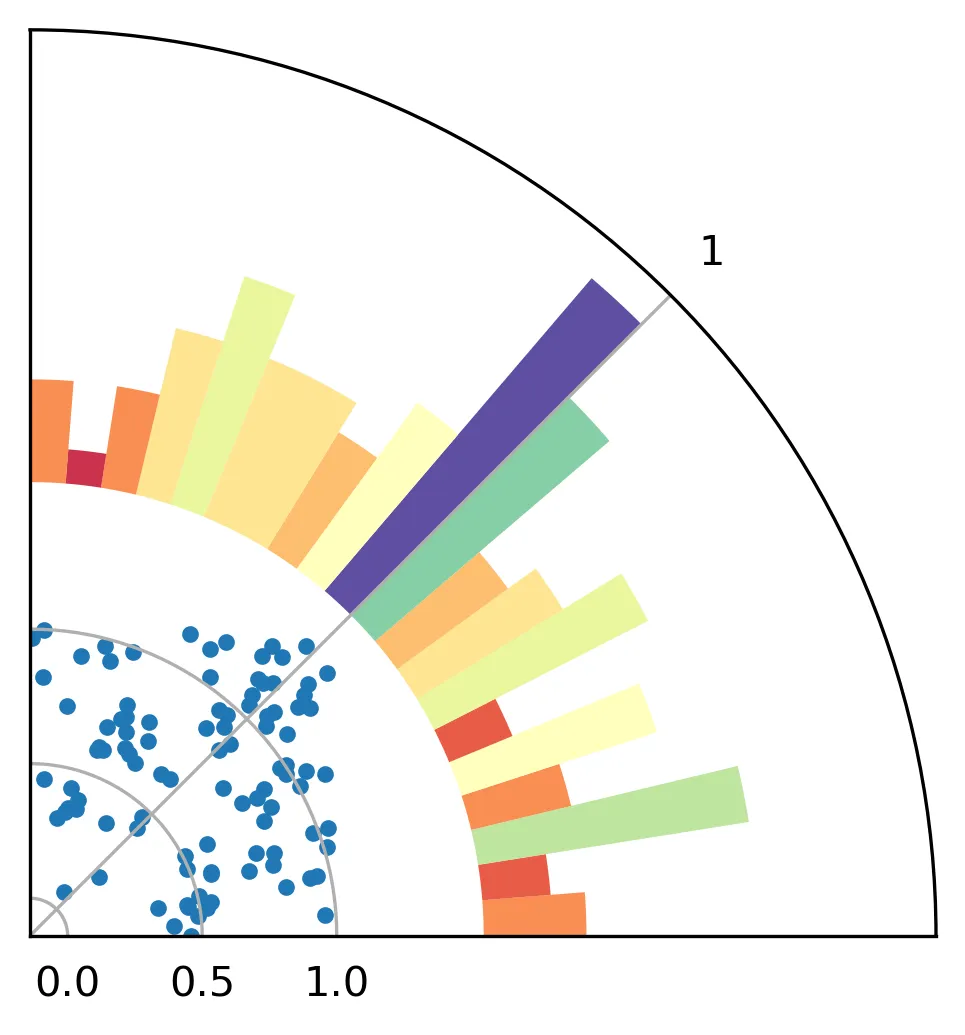好的。感谢Nicolas提供的答案和tomjn提供的答案,我现在有了可行的解决方案 :)
import numpy as np
import matplotlib.pyplot as plt
n = 50
x = 0.3 + np.random.randn(n)*0.1
y = 0.4 + np.random.randn(n)*0.02
def radial_corner_plot(x, y, n_hist_bins=51):
"""Scatter plot with radial histogram of x/y ratios"""
fig = plt.figure(figsize=(6,6))
ax1 = fig.add_axes([0.1,0.1,.6,.6], label="cartesian")
ax2 = fig.add_axes([0.1,0.1,.8,.8], projection="polar", label="polar")
ax2.set_rorigin(-20)
ax2.set_thetamax(90)
offset_in_radians = np.pi/4
def rotate_hist_axis(ax):
"""rotate so that 0 degrees is pointing up and right"""
ax.set_theta_offset(offset_in_radians)
ax.set_thetamin(-45)
ax.set_thetamax(45)
return ax
r = np.sqrt(x**2 + y**2)
phi = np.arctan2(y, x)
h, b = np.histogram(phi,
bins=np.linspace(0, np.pi/2, n_hist_bins),
density=True)
ax1.scatter(x,y)
ax1.set(xlim=[0, 1], ylim=[0, 1], xlabel="x", ylabel="y")
ax1.spines['right'].set_visible(False)
ax1.spines['top'].set_visible(False)
ax2 = rotate_hist_axis(ax2)
b = b - offset_in_radians
bars = ax2.bar(b[:-1], h, width=b[1:] - b[:-1], align='edge')
def update_hist_ticks(ax, desired_ratios):
"""Update tick positions and corresponding tick labels"""
x = np.ones(len(desired_ratios))
y = 1/desired_ratios
phi = np.arctan2(y,x) - offset_in_radians
xticklabels = [str(round(float(label), 2)) for label in desired_ratios]
ax2.set(xticks=phi, xticklabels=xticklabels)
return ax
ax2 = update_hist_ticks(ax2, np.array([1/8, 1/4, 1/2, 1, 2, 4, 8]))
ax2.grid(which="major", axis="y")
ax2.set_yticks([])
return (fig, [ax1, ax2])
fig, ax = radial_corner_plot(x, y)
感谢您的指导!

 类似的解决方案(由Nicolas Legrand提供)用于查看x和y的差异(代码在这里),但我们需要查看比率(即x/y)。
类似的解决方案(由Nicolas Legrand提供)用于查看x和y的差异(代码在这里),但我们需要查看比率(即x/y)。
 更具体地说,当我们想要查看两个概率的比值时,这非常有用。
更具体地说,当我们想要查看两个概率的比值时,这非常有用。 。
。 类似的解决方案(由Nicolas Legrand提供)用于查看x和y的差异(代码在这里),但我们需要查看比率(即x/y)。
类似的解决方案(由Nicolas Legrand提供)用于查看x和y的差异(代码在这里),但我们需要查看比率(即x/y)。
 更具体地说,当我们想要查看两个概率的比值时,这非常有用。
更具体地说,当我们想要查看两个概率的比值时,这非常有用。 。
。

